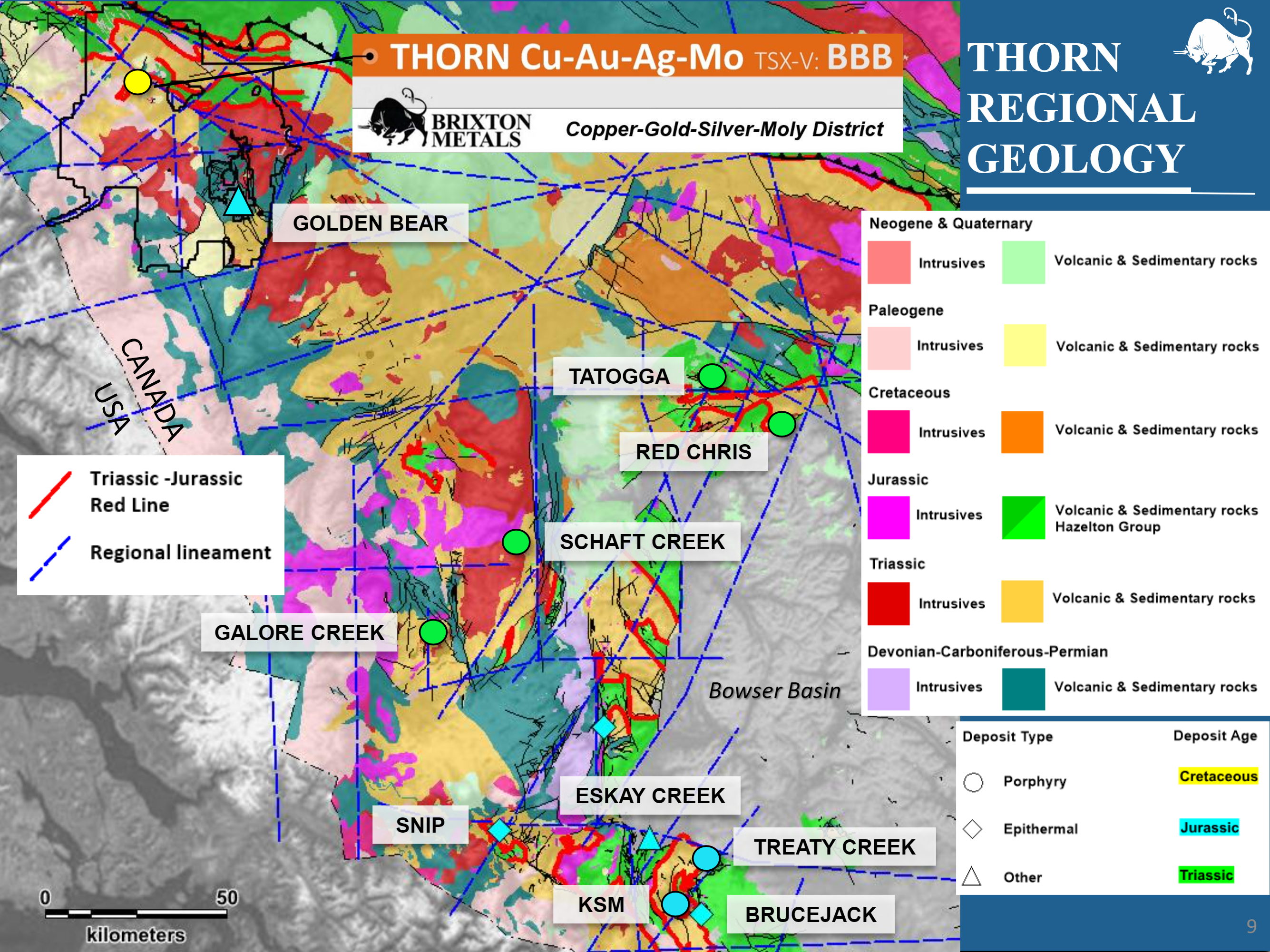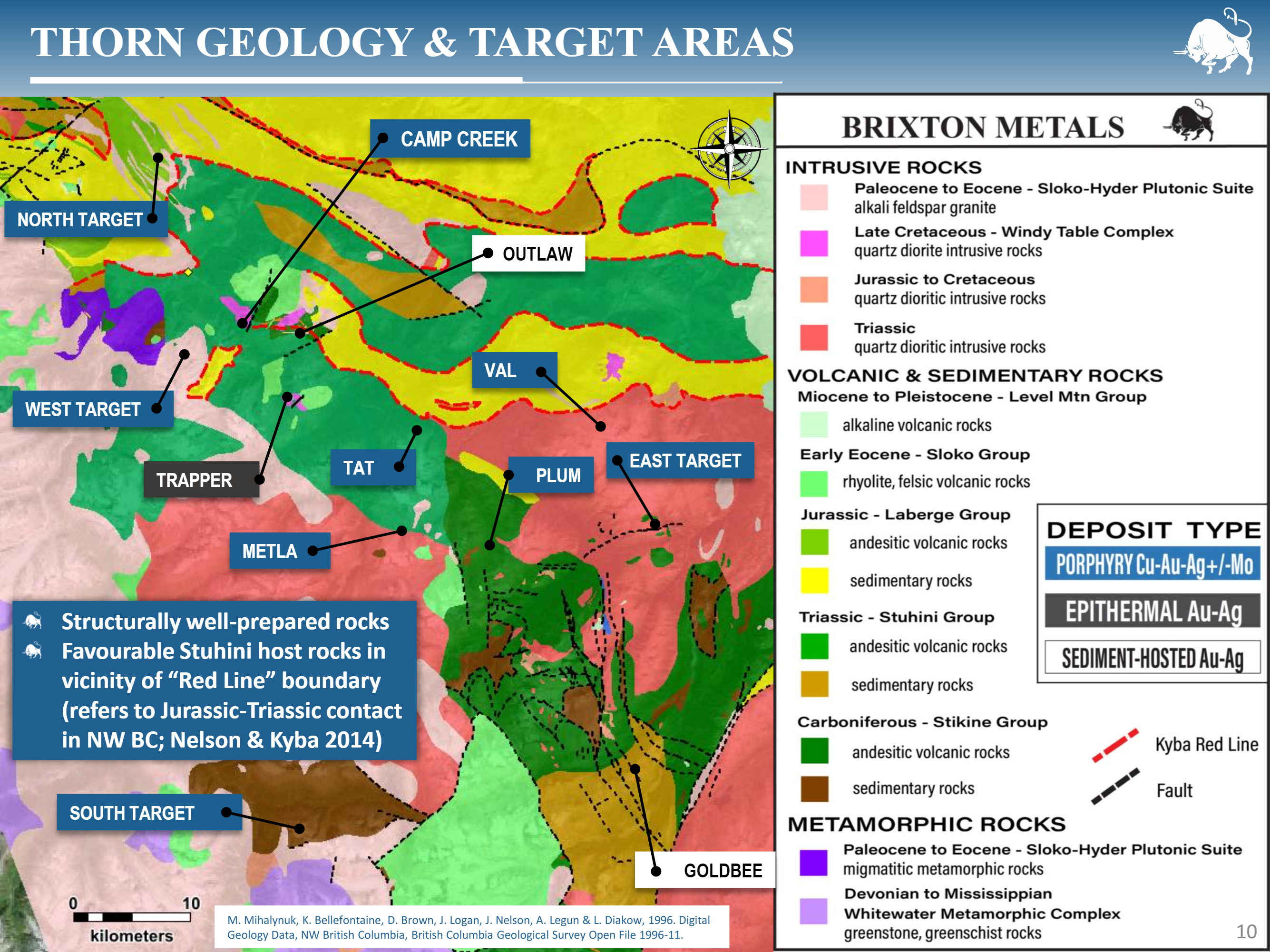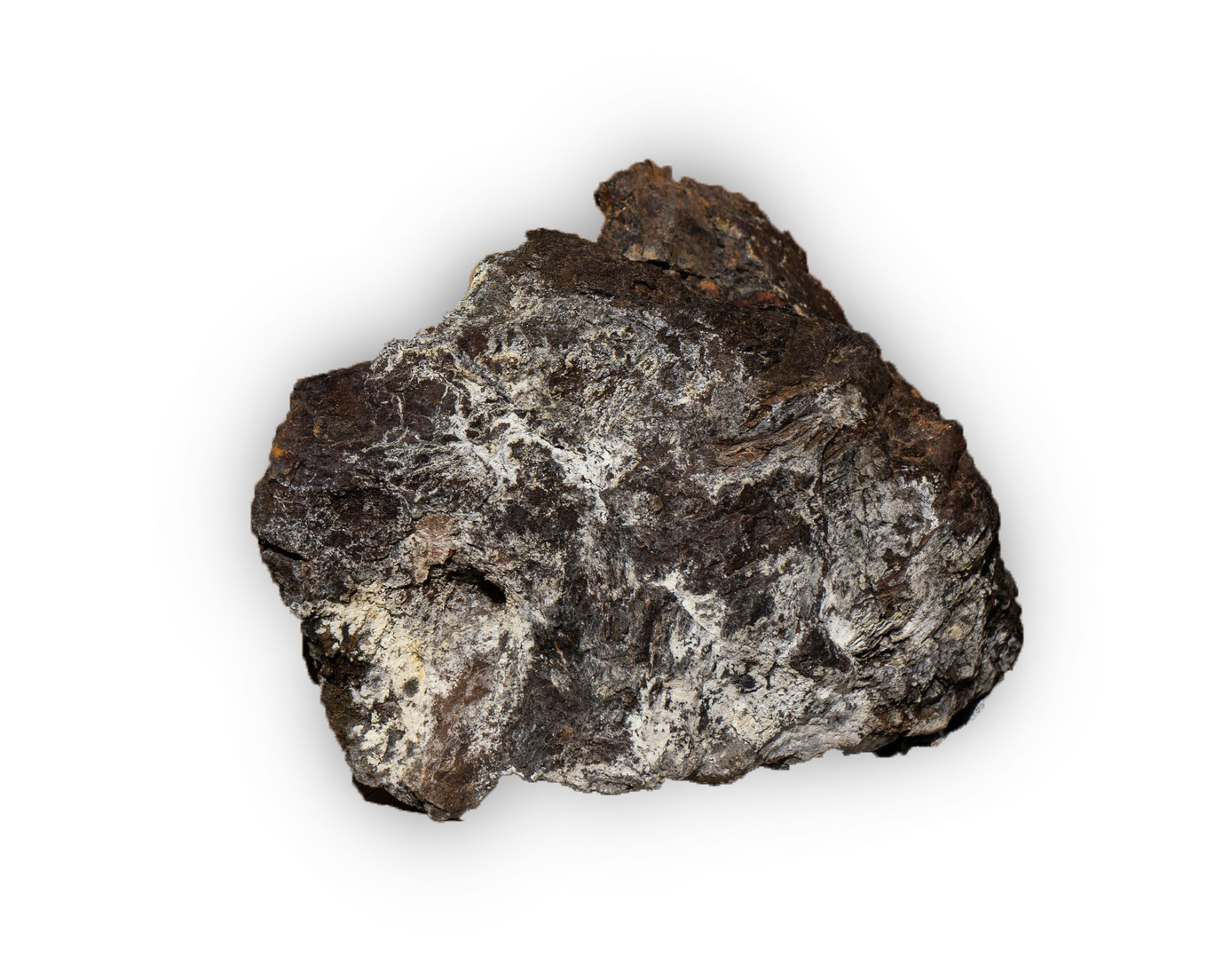Brixton Metals’ flagship with BHP as a strategic corporate level investor.
The Thorn Project hosts a district-scale, Triassic to Eocene, volcano-plutonic complex with several styles of mineralization related to porphyry and epithermal environments.
Exploration Targets
Learn more about Brixton’s 16 recognized copper-gold-silver targets. View the videos, mineralization, core photos and drilling data:
History
The earliest known work on the Thorn property was carried-out by Cominco in 1952, followed by Kennco in 1959, and Chevron Minerals in the 1980’s.
Brixton acquired the Thorn property in 2009 and began actively exploring in 2011. Since the original Thorn property acquisition, Brixton has continued to amalgamate claims within the region, which has produced a 2,945 km2 land package covering a district-scale, 80km Cu-Au-Ag-Mo porphyry trend.
Over 370 holes have been collared on the project since 1952, totaling 92,900 meters. Brixton Metals has drilled over 73,900 meters since 2011. This work has been guided by approximately 28,000 soil samples, 9,500 rock samples and 1,200 stream sediment samples collected across the project.
Geology
Geology here is defined by volcanic and sedimentary rocks of the Stikine tectonostratigraphic terrane, intruded by Triassic to Eocene volcanoplutonic rocks.
Geology at the Thorn Project is defined by volcanic and sedimentary rocks of the Stikine tectonostratigraphic terrane, intruded by Triassic to Eocene volcanoplutonic rocks. In this region, the Stikine arc is composed of the Stuhini and Laberge Groups. The Stuhini Group is a Late Triassic island arc sequence comprised of massive submarine andesite and pillow basalts overlain by the Sinwa Formation, which are deep submarine clastic sedimentary rocks that shallow upwards, with increasing occurrences of limestone beds upwards. The Laberge Group is Early to Middle Jurassic in age and unconformably overlies the Stuhini Group. It is composed of 3-5 km of calcareous clastic sediments, including sandstone, conglomerate and shale. Multiple stages of subduction-related magmatism were emplaced at the Thorn Project during the Triassic, Jurassic, Cretaceous, and Eocene. At the Outlaw Zone, Jurassic-aged rhyodacite dykes are related to gold mineralization. The Golden Bear Mine gold mineralization is also Jurassic in age. The Camp Creek and Trapper mineralizing systems are Cretaceous in age. Zircon U-Pb Geochronology work at Metla indicates a Triassic-aged system.


Thorn is relatively accessible from Vancouver. A commercial flight to Whitehorse, Yukon departing in the morning allows for transfer to a fixed wing aircraft, which can land on the property airstrip by early afternoon. Access around the project is supported by helicopter from the well-established Thorn Camp.





Geology here is defined by volcanic and sedimentary rocks of the Stikine tectonostratigraphic terrane, intruded by Triassic to Eocene volcanoplutonic rocks.
Geology at the Thorn Property is defined by volcanic and sedimentary rocks of the Stikine tectonostratigraphic terrane, intruded by Triassic to Eocene volcanoplutonic rocks. In this region, the Stikine arc is composed of the Stuhini and Laberge Groups. The Stuhini Group is a Late Triassic island arc sequence comprised of massive submarine andesite and pillow basalts overlain by the Sinwa Formation, which are deep submarine clastic sedimentary rocks that shallow upwards, with increasing occurrences of limestone beds upwards. The Laberge Group is Early to Middle Jurassic in age and unconformably overlies the Stuhini Group. It is composed of 3-5 km of calcareous clastic sediments, including sandstone, conglomerate and shale. Multiple stages of subduction-related magmatism were emplaced at the Thorn Property during the Triassic, Jurassic, Cretaceous, and Eocene. At the Outlaw Zone, Jurassic-aged rhyodacite dykes are related to gold mineralization. The Golden Bear Mine gold mineralization is also Jurassic in age. The Camp Creek and Trapper mineralizing systems are Cretaceous in age. Zircon U-Pb Geochronology work at Metla indicates a Triassic-aged system.